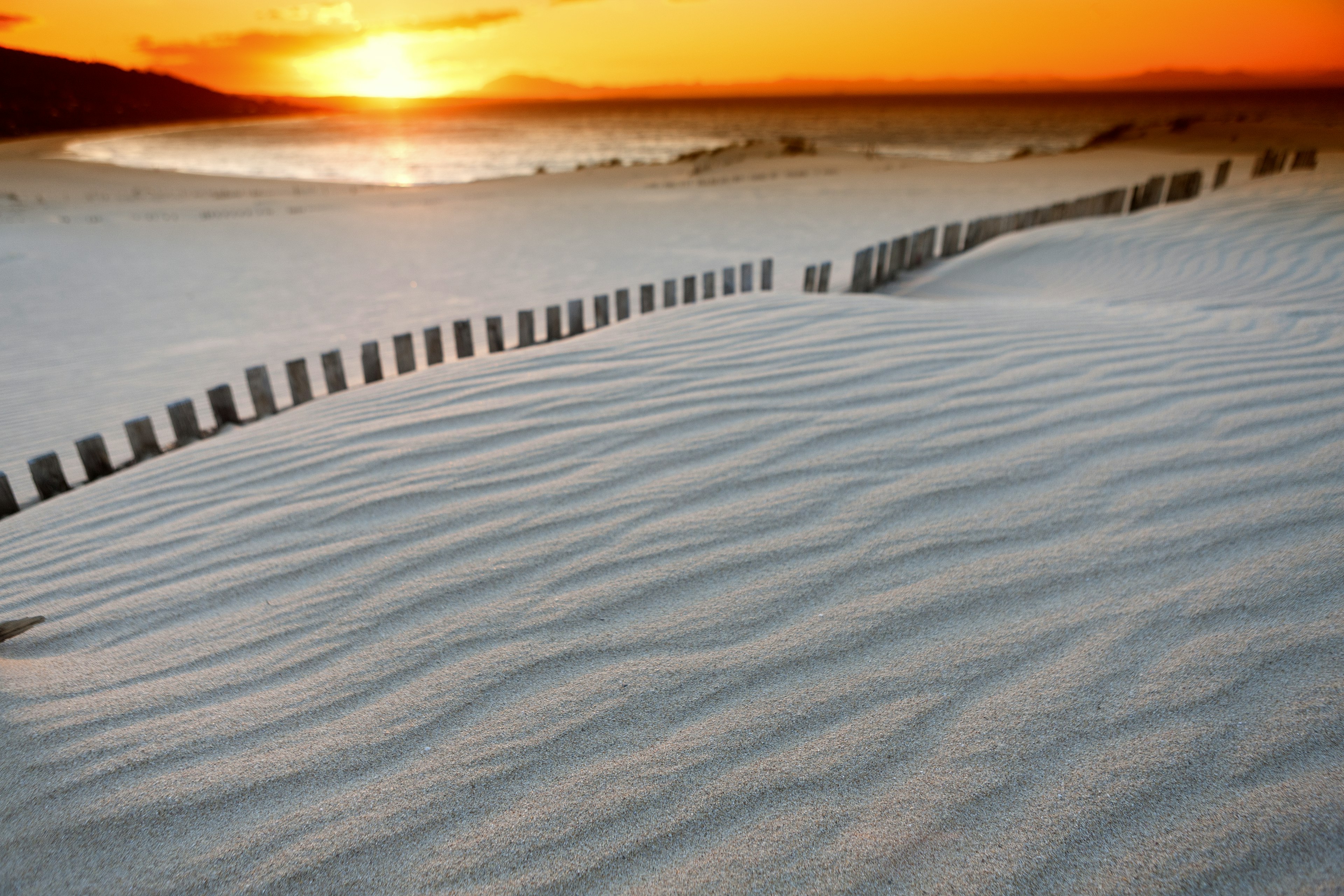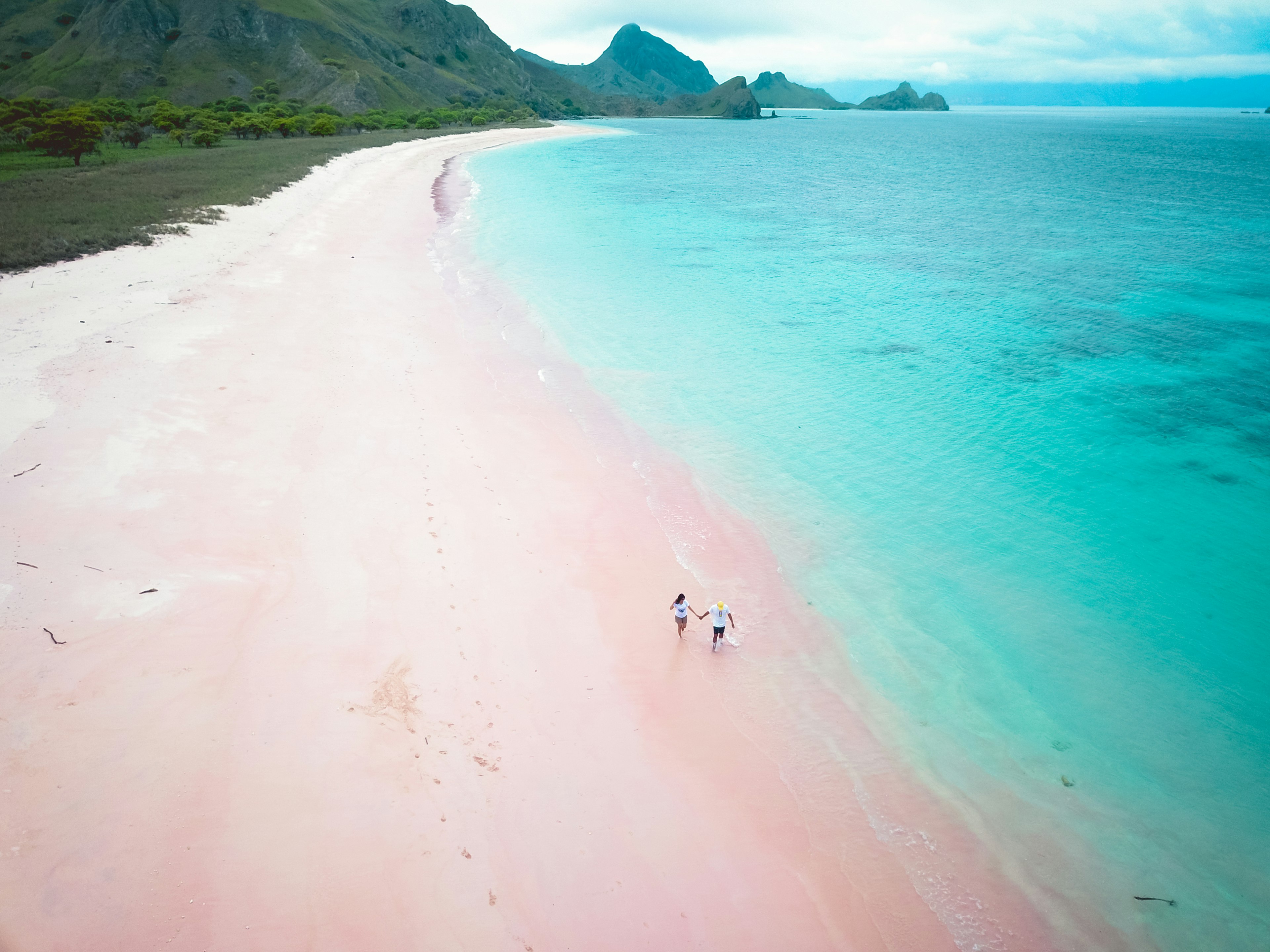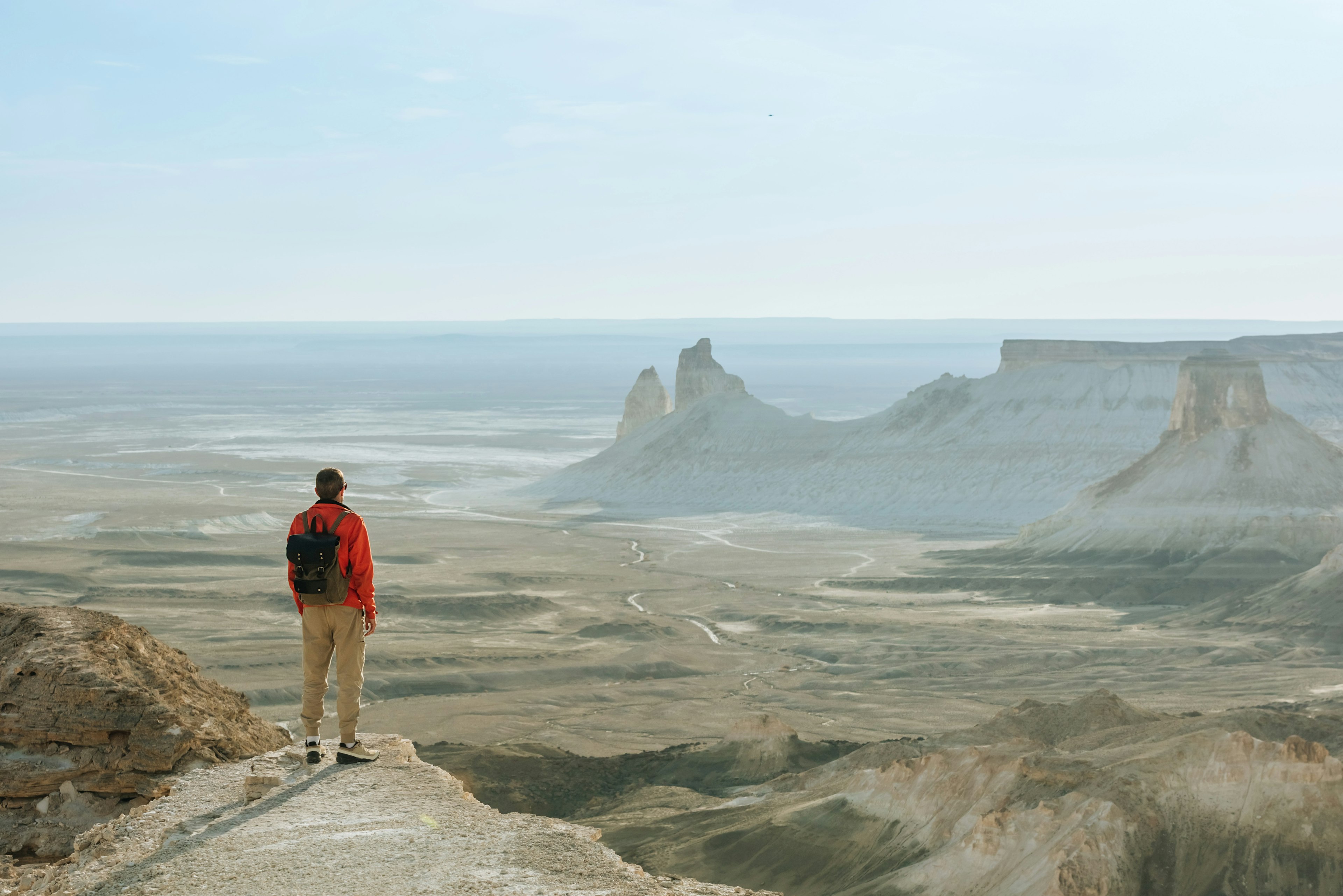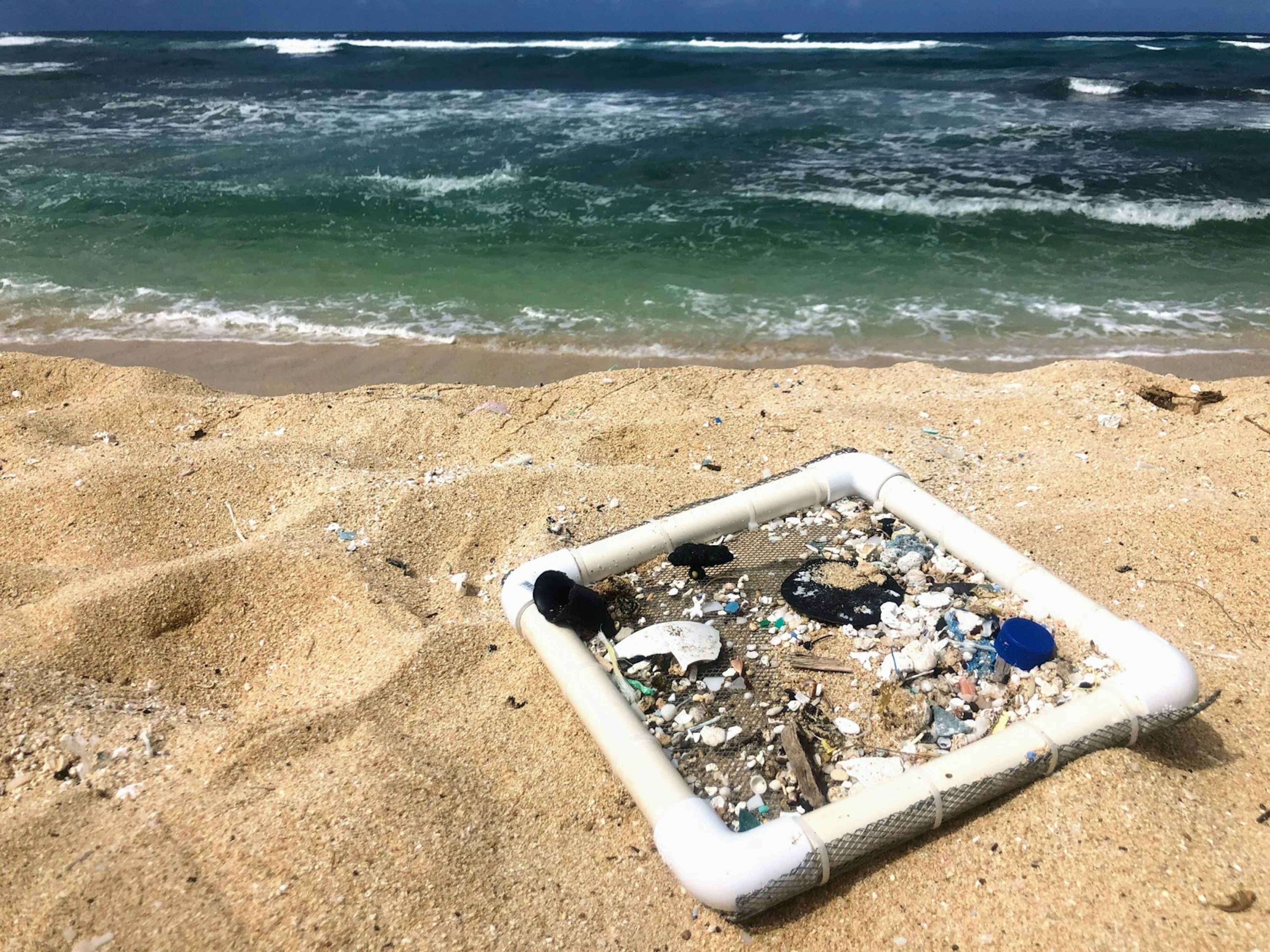Algunas de las instancias más inolvidables en la vida son nuestros ‘primeros’: la primera vez al volante, asistiendo a un concierto o besando a alguien. Pero a menudo los escenarios para tales eventos – estacionamientos, centros comunitarios, callejones grafiteados – no les hacen justicia.
Esto nos llevó a reflexionar: si tuvieras la oportunidad de revivir estos momentos cruciales en cualquier parte del mundo, ¿dónde sería el lugar perfecto para experimentarlos?
Inspirados por El Mejor Momento de Tu Vida – una antología de 100 experiencias de viaje profundas, emotivas e imborrables – hemos emparejado algunos de los hitos más importantes de la vida con escenarios acordes a su trascendencia.

Primero… conducir
Muchos de nosotros crecimos soñando con nuestra primera vez detrás del volante, acelerando y alejándonos hacia el ocaso. La realidad para la mayoría incluía avanzar lentamente en primera marcha alrededor del estacionamiento vacío de un supermercado local, con un padre o hermano mayor sentado rígidamente en el asiento del pasajero, pisando esporádicamente un pedal de freno imaginario.
Si pudieras hacerlo de nuevo: cambia el supermercado por los salvajes pasos montañosos de Canadá con un paseo por la Icefields Parkway. Esta amplia carretera pública, basada en un antiguo sendero de recuas recorrido por comerciantes de pieles y comunidades de las Primeras Naciones, serpentea durante 143 millas épicas por el corazón de las Montañas Rocosas Canadienses, bordeando montañas imponentes cubiertas de nieve y matorrales de bosque que relucen en las aguas reflectantes de lagos glaciares. Mientras que el flujo de tráfico mínimo resulta favorable para los conductores recién titulados, viajar por carretera en esta parte remota del mundo trae sus propios peligros únicos: osos grizzly.
Alternativas: para un viaje por carretera más centrado en la vida salvaje (y con obstáculos mínimos), considere un safari autoguiado en Zambia. Mientras tanto, paisajes igualmente impresionantes prevalecen a lo largo de la Ruta 40 de Argentina, que atraviesa 20 parques nacionales mientras recorre la longitud del país.

Primero… beso
Ah, el primer beso – un verdadero campo minado de un hito. Ya sea que el tuyo fuera en una discoteca escolar, un club nocturno sudoroso o una residencia estudiantil, las probabilidades son que la primera vez que uniste labios con alguien se sintió incómodo, torpe y un poco… húmedo.
Si pudieras hacerlo de nuevo: los novatos en el arte del beso francés pueden calmar tanto los nervios previos como el temor al exceso de humedad al observar a docenas de personas participando en el festival anual Omed-Omedan, también conocido como ‘el ritual del beso’, en la aldea balinesa de Sesetan. En el primer día del Año Nuevo Saka, multitudes de locales solteros se reúnen para besarse públicamente en un esfuerzo por alejar la mala suerte y encontrar el amor, antes de ser empapados sin ceremonias por sacerdotes que no quieren que las cosas se calienten demasiado. Una vez seguros de tu técnica, dirígete al sur hacia una de las prístinas franjas de arena de la península de Bukit – no está nada mal como escenario para un primer beso al atardecer.
Alternativas: para algo un poco más tradicional, considera el Puente Pont Notre-Dame en París – idealmente bajo la lluvia – o, para aquellos en busca de amor, prueba el ‘Banco del Beso’, un hito en el campus de la Universidad de Syracuse, Estado de Nueva York. Se dice que las parejas que se besan mientras están sentadas en el banco algún día se casarán.

Primeiro… tatuagem
Se aquele símbolo chinês marcado de forma permanente em seu braço foi obtido em um estúdio de rua suspeito, no quarto de um amigo ‘talentoso’ ou faz parte de uma lembrança duradoura de uma semana de aventuras em uma das famosas cidades festivas da Europa, quando se trata de tatuagens, nem sempre acertamos logo na primeira tentativa.
Se pudesse refazer: adicione um toque de seriedade à sua primeira experiência ao ser tatuado no que se acredita ser o estúdio de tatuagem mais antigo do mundo. Situado em um beco sinuoso na Cidade Velha de Jerusalém, o Razzouk Ink é administrado por Wassim Razzouk, que orgulhosamente continua uma tradição familiar de 700 anos de tatuar peregrinos que visitam a cidade sagrada. Enquanto os temas religiosos continuam a ser o núcleo de seu trabalho – com alguns desenhos baseados em estênceis de madeira entalhados à mão do século 16 – os viajantes que passam pela agulha neste estúdio atmosférico podem escolher entre uma ampla variedade de opções ou criar seu próprio design com antecedência.
Alternativas: técnicas de tatuagem mais tradicionais são oferecidas em estúdios por toda a Tailândia, onde as tatuagens de bambu (que utilizam pedaços de bambu afiados em vez de uma agulha elétrica) são populares. Aqueles sem inspiração deveriam considerar ir à convenção anual de tatuagens de Londres, onde mais de 400 artistas internacionais exibem suas melhores habilidades em arte corporal.

Primeiro… concerto
Todos desejam que seu primeiro show tenha sido um evento marcante no folclore musical; Dylan eletrizando o público, Kurt Cobain encabeçando o Reading Festival em uma cadeira de rodas – uma história impressionante para tirar na festa do trabalho. Porém, uma vez que tudo está dito e feito, sua primeira experiência com música ao vivo provavelmente envolveu uma banda cover no salão de sua cidade local, liderada por um homem acima do peso usando uma peruca de Bon Jovi mal ajustada e um olhar atormentado nos olhos.
Se pudesse refazer: existem poucos locais mais deslumbrantes para se mergulhar no mundo da música ao vivo do que o Red Rocks Amphitheatre no Colorado. Este local no topo da colina foi esculpido em uma formação rochosa natural, com um palco e assentos ao ar livre encaixados entre duas gigantescas monolitos de arenito que proporcionam acústica excelente. O local único no mundo já recebeu alguns dos maiores artistas, incluindo Jimi Hendrix, U2 e, marcadamente, os Beatles em sua primeira turnê pelos EUA. Hoje em dia, o cenário conceituado acolhe de artistas de jazz a EDM, todos acompanhados pela vista do extenso parque com um céu estrelado acima.
Alternativas: para ouvir instrumentos clássicos soar em seu melhor, dirija-se ao Tokyo Opera City Concert Hall; o local abriga a Orquestra Filarmônica de Tóquio e é exaltado por sua lendária acústica. Enquanto isso, o mundialmente famoso Glastonbury Festival da Inglaterra recebe centenas de apresentações ao vivo em seu local agrícola durante o fim de semana, então você certamente encontrará ao menos uma performance digna de se gabar.

Primero… trago legal
Nada simboliza ‘adultez’ como el primer sorbo de tu primera bebida alcohólica legal, incluso si fue un vaso de vino barato comprado para ti por una tía mayor en un pub local con suelos pegajosos. Probablemente, ese primer prueba con el alcohol fue fácilmente olvidable, y no solo por las cantidades ingeridas.
Si pudieras volver a hacerlo: El Día de la Cerveza se festeja cada año en Islandia el 1 de marzo, el día que las leyes de prohibición del país de 74 años finalmente terminaron en 1989. Cada año, la conmemoración de ese día trascendental se realiza con gran entusiasmo por los islandeses: únete a los fiesteros que abarrotan los pubs de Reikiavik, prueba un trago celebratorio de Brennivin (la bebida emblemática del país) en lo alto del glaciar Snæfellsjökull o, para la experiencia turística típica de Islandia, pide una cerveza en el bar del spa geotérmico Blue Lagoon. Skál (salud) por eso.
Alternativas: para lúpulo y hedonismo, acompaña a los alegres fiesteros vestidos con lederhosen que celebran el Oktoberfest, el festival de cerveza más grande del mundo, en Múnich, Alemania, o para algo un poco más pequeño, empápate del ambiente de los pubs antiguos de Dublín, donde la escena musical tradicional local es tan embriagadora como la Guinness elaborada localmente.

Primero… viaje al extranjero
Para muchos, las vacaciones familiares anuales son parecidas a una partida de Monopoly: parece durar una eternidad, surgen peleas por el dinero y todos quieren ser el perro (que envidiablemente se ha quedado en casa). Claro está, los viajes de la infancia proporcionan montones de recuerdos atesorados, pero hay más en la vida que sentarse en una carpa húmeda jugando una vez más al rummy.
Si pudieras volver a hacerlo: el Grand Tour era un tradicional rito de paso para jóvenes nobles europeos (y luego estadounidenses) adinerados durante el siglo XVIII. Aquellos que podían permitírselo dejaban su tierra natal, a menudo acompañados por un ‘guía’ (acompañante), en un intento de iluminarse visitando las galerías de arte y asistiendo a las salas de concierto de Europa. Afortunadamente, en los 300 años desde entonces, viajar por el continente se ha vuelto mucho más accesible – con los pases Interrail una forma siempre popular de viajar entre ciudades icónicas – pero no menos gratificante. Pasea junto al Sena en París, recorre librerías caóticas en Ámsterdam y deslúmbrate con antigüedades en Roma: que empiece la educación.
Alternativas: ¿Un descanso en las playas de Sri Lanka? ¿Montar a caballo en Kirguistán? ¿Siguiendo el Camino del Gringo por Sudamérica? Mientras quizás sea demasiado tarde para un regreso a tus primeras vacaciones, hay posibilidades interminables para la próxima.























































